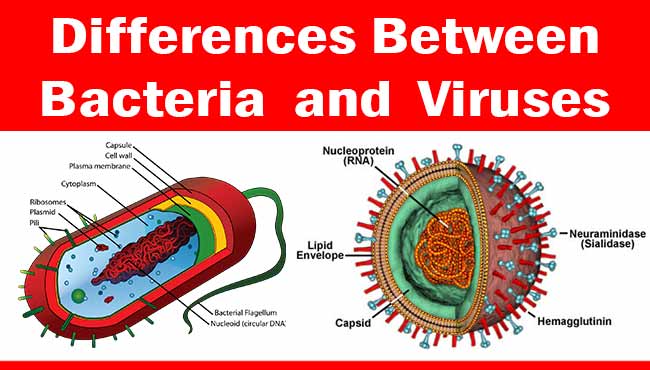Describe the Differences Between Bacteria and Viruses
The gut microbiota protects against enteropathogens 12 extracts nutrients and energy from our diets 34 and contributes to normal immune function 5Dysbiosis disruption of the normal balance between the gut microbiota and host has been associated with obesity 67 malnutrition 8 inflammatory. Explore the way bacteriophages replicate using the lytic and lysogenic cycle.
Difference Between Bacteria And Virus Classification Structure Metabolism
The name prokaryote suggests that prokaryotes are defined by exclusionthey are not eukaryotes or organisms whose cells contain a nucleus and other internal membrane-bound organelles.

. The products of viral replication are then obtained and their virulence factors are neutralized along with their transmissibility using special techniques. Bacteria on the other hand are the most prevalent cell type with an estimated 1030 bacteria on earth. Streptomycin binds 70S ribosome and stops protein synthesis but it can not bind 80S ribosome of eukaryotes and.
As noted earlier the most striking difference identified so far is that the majority of recently emerging pathogens are viruses rather than bacteria fungi protozoa or helminths. Significant differences in virus removal by T. There are many differences between prokaryotic and eukaryotic cells.
Viruses can infect many organisms even bacteria. Here we examined the feeding behavior of Tetrahymena pyriformis ciliates on 13 viruses including bacteriophages enteric viruses and respiratory viruses. Viruses are diverse entities.
Pyriformis were observed ranging from no removal Qbeta coxsackievirus B5 to 27 log 10 JC polyomavirus after 48 h of co-incubation of the protist with the virus. A Classifications by shape. Live viruses are cultured inside living bacterial or other nonhuman cells.
However close contact between animals and humans increases the likelihood of such viruses evolving and adapting to infect humans too. Three varieties of OPV known as Sabin 1 2 and 3 are produced in this manner. A bacteriophage is a special kind of virus that infects bacteria.
They are sometimes thought of as being in between bacteria and eukaryotes as they have a structure resembling bacterium but certain enzymes and metabolic pathways resembling eukaryotes. Describe the basis for the Baltimore classification system. However all cells have four common.
Bacteria are often classified based on their. Describe important differences in structure between Archaea and Bacteria. Nearly all forms of lifefrom prokaryotic bacteria and archaeans to eukaryotes such as plants animals and fungihave viruses that infect them.
They vary in structure methods of replication and the hosts they infect. Some examples of activities that increase the chance of this. Understand past and emerging classification systems for viruses.
Use of OPV has several advantages. D Species jumps For viruses one of the key steps in the emergence process is the jump between one host species and humans 37. There are sufficient differences between bacterial ribosomes and eukaryotic ribosomes that some antibiotics will inhibit the functioning of bacterial ribosomes but not a eukaryotes thus killing bacteria but not the eukaryotic organisms they are infecting.
Most gut microbes are harmless or beneficial to the host.

Differences Between Bacteria And Viruses

Do You Know Do You Know The Difference Between A Bacterial And A Viral Infection Study Unit Cell Wall Homeschool Science

Bacteria Vs Viruses The Unit Of Microbiology Nursing School Survival Microbiology Medical Knowledge
Comments
Post a Comment